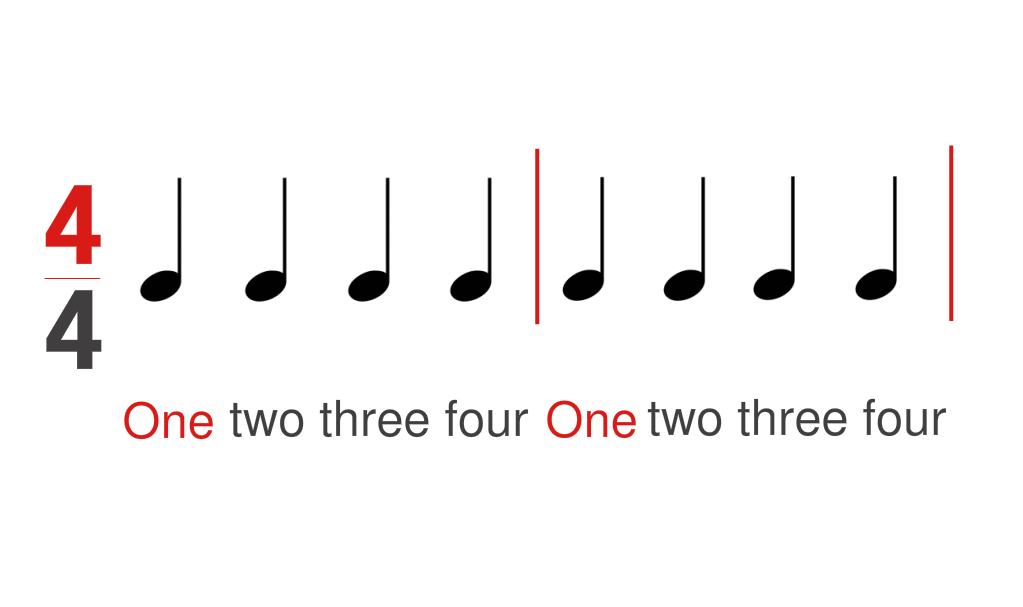The Time Signature – How Many and What Kind?
A time signature is the key to knowing how to count your music. Beats, grooves, counting and understanding music – it’s all sorted out with the time signature.

The Top Number and the Bottom Number each give important clues:
When do you START Counting?
How do You Know When to STOP Counting?
What Kind Of Note Gets A Count?

Natural Accents and Patterns
As we saw in our intro to Quarter Notes – a steady beat is established with quarter notes (and quarter rests).

“Hey Nancy – play beat #4,112 a bit softer next time!”

Patterns
We don’t have to count forever. Just like marching, we can group the notes into patterns of 2, 3, 4 or whatever we want.
This is what the time signature does best.
The Top Number of the time signature tells us how many…..

No More Guessing
Plus – for a visual aid – we add a bar line. The bar line doesn’t create a pause or change. It is just a visual means of grouping the beats together.


The Bottom Number
The bottom number of the time signature tells you:
What kind of note gets one beat.
In all of the above examples, the quarter note gets 1 full beat.
Instead of counting to 16 – the time signature groups the notes into four bars of 4 beats. It is now easier to see and count.
